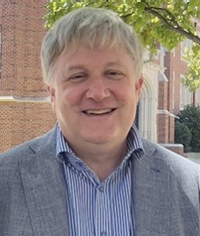2025 AOCS Annual Meeting & Expo.
Surfactants and Detergents
How good is HLD in predicting cleaning efficacy for laundry?

Brian Grady, PhD (he/him/his)
Douglas and Hilda Bourne Chair in Chemical Engineering
Institute for Applied Surfactant Research, University of Oklahoma
Norman, Oklahoma, United States
Presenting Author(s)
A recent review (Phaodee and Weston, J Surfact Deterg. 2023;26:277–286.) described how HLD could be used to formulate detergents. This talk covers much of the same ground as that paper, but additional data that was not presented in that paper, including new data gathered in our labs, is presented in this talk. The following four questions will be discussed. In that review paper (and elsewhere), the suggestion was made that optimal cleaning efficacy occurs if HLD is between -3 and 0. How consistent is that statement? Also, our group has made the statement that cleaning efficacy falls off rapidly above HLD >0, how consistent is that statement? Third, at low concentrations of ionic surfactant, which are very important in terms of having a large HLD range, the physics of surfactant solution changes significantly, as there is not enough salt to make the Debye length ~0. Does this change in physical chemistry manifest itself in cleaning efficacy behavior? Fourth, nonionic surfactants have a finite range for HLD variation, how does this restriction manifest itself in cleaning studies?

.png)